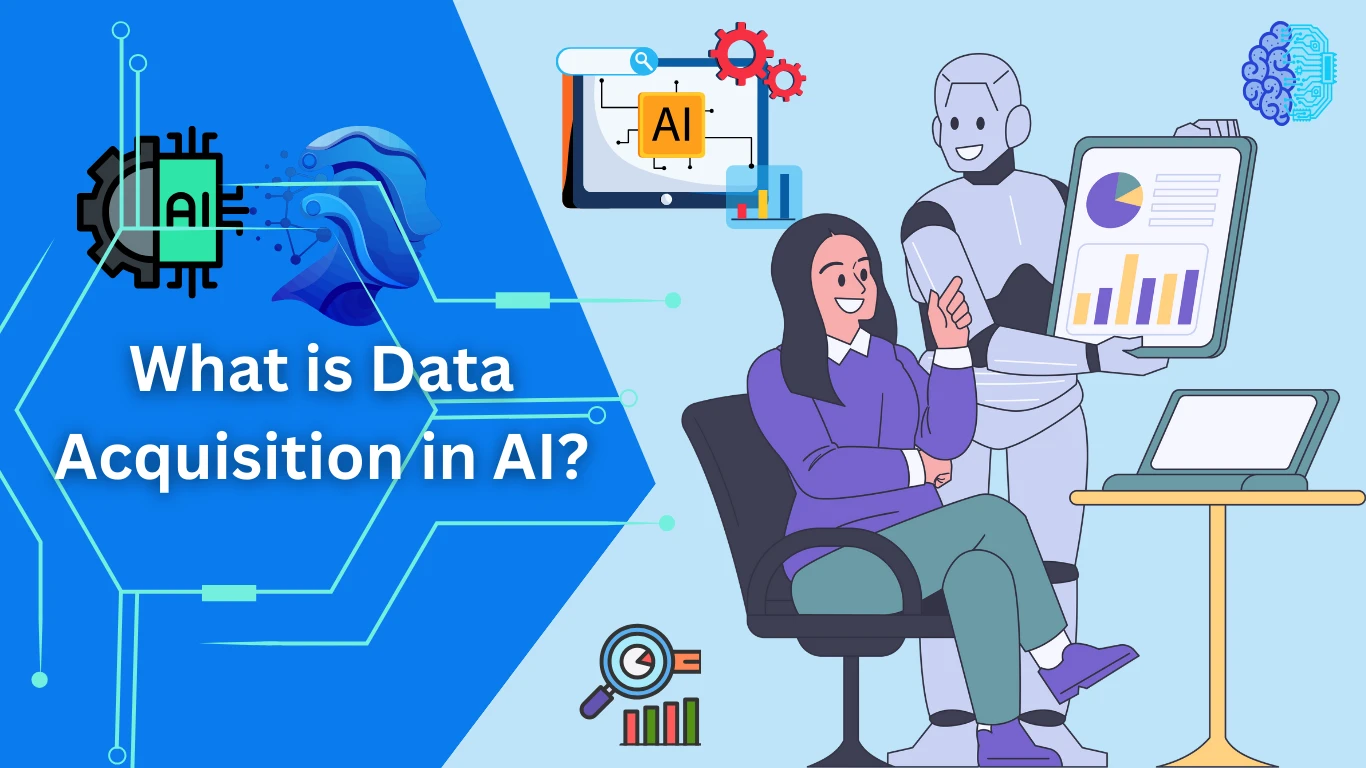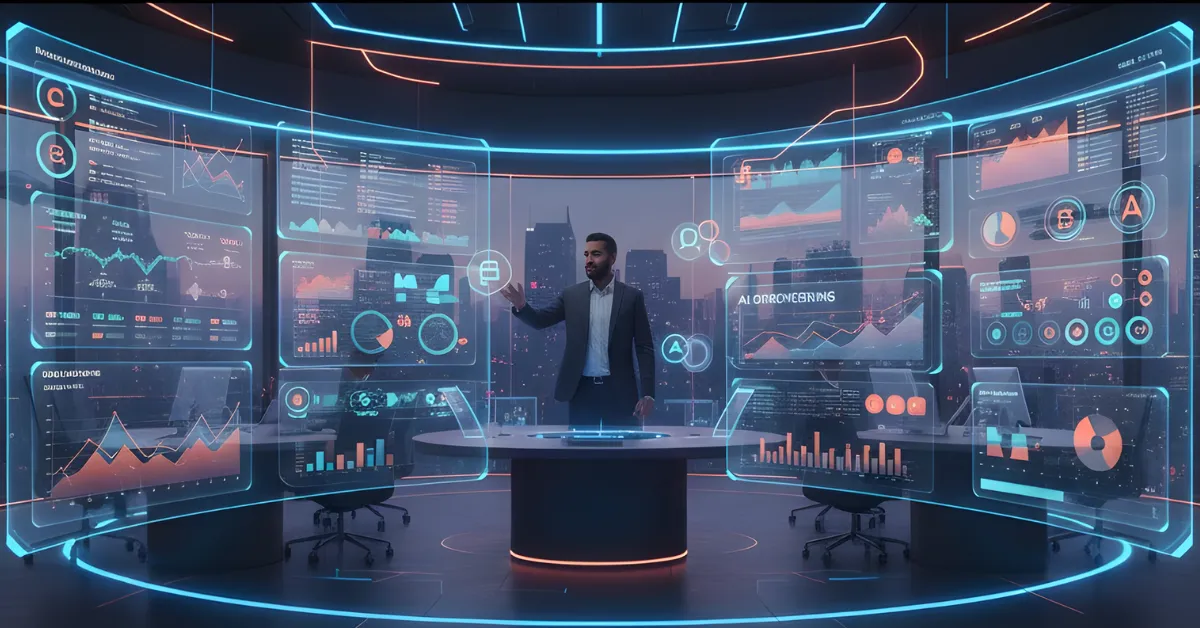What is Data Acquisition in AI?

Hello friends!
I am your digital friend Somen– Today, let us understand a very important and basic topic in easy language – AI in Data Acquisition।
Now think, if a person has to decide without seeing, hearing, or feeling anything, will he be able to make it?
No way.
In the same way, Artificial Intelligence Before using (AI) for any work, it should also data means information It is needed.
And where does this information come from? How to get it? How many types are there? And why is it important?
Today, we will understand all this clearly in the first part of this article. Are you ready? Let's get started!
What is Data Acquisition?
To put it simply –
Data Acquisition means collecting information necessary for AI to work.
This information can be in different forms –
- text (like the one you are reading now)
- Image
- audio
- Video
- Sensor data (e.g., heart rate in a smartwatch)
And we call this whole process Data Acquisition, i.e, Collecting, processing, and storing data so that AI can learn from it.
Why is Data Acquisition important?
Data is as important to teach AI as experience is to teach a child.
Without data, AI is just an empty mind box.
Some important reasons:
- For Model Training:
Just like children are taught by showing them things many times, similarly, AI is also taught by giving a lot of data. - To recognize the pattern:
AI recognizes patterns by looking at different data and makes predictions based on it. - Decision Making:
When AI has the right data, it can make better decisions. - Continuous Learning:
The more and better the data, the smarter the AI becomes.
Types of Data Acquisition
Let us talk now – In how many ways does AI collect data?
1. Manual Data Collection (Data collected by hand)
- The person himself conducts the survey, fills the form, or extracts data from the website.
- Example: A survey conducted through Google Forms.
2. Automated Data Collection (Automatic Method)
- Data is collected automatically through software or scripts.
- Example: Trackers installed on a website that record visitor activity.
3. Sensor-Based Data Acquisition
- Data comes from smart devices such as IoT gadgets, like heart rate, temperature.
- Example: Data received from fa itness band or a smartwatch.
4. Web Scraping
- Public data is collected from websites through bots or tools.
- Example: Collecting product reviews from Amazon.
5. Crowdsourcing
- Data is taken from many people simultaneously.
- Example: Traffic information on Google Maps is available from users.
6. Third-party Datasets
- Buying or downloading previously prepared and collected data from someone else.
- Example: Taking data from Kaggle, UCI Machine Learning Repository.
Real-Life Example: How does Data Acquisition happen in AI?
Suppose we have an AI chatbot. We are looking for someone who can answer questions in Hindi.
Now, for that we need:
- Lots of data in the Hindi and English languages, etc
- Old chats of users
- Question-answer examples
- Sound files if will it work in voice
Now, where will we get all this data from?
- Text from Hindi pages of Wikipedia
- Social media chats (if allowed)
- Data from news sites
- Data was collected from users
By processing these, we teach AI when to give which answer.
That's it, Data Acquisition in action!
Raw Data vs Processed Data
One more important thing –
Not every data you bring is directly suitable for AI.
Raw Data:
- Like unfiltered rice.
- It may contain noise, mistakes, duplicates, and redundant information.
Processed Data:
- That means clean, fresh, and ready-to-use data.
- Like a fitness diet for AI!
So Data Acquisition not only involves bringing data, but also cleaning it, understanding it and bringing it in the right format.
Challenges in Data Acquisition
Let us now talk about some challenges –
Meaning the problems that arise in collecting data:
- Privacy Issues:
It is not ethical to collect everyone's information – consent is necessary. - Data Bias:
If one-sided data is taken, AI can also be biased. - Data Quality:
Providing incomplete or inaccurate data causes AI to learn incorrectly. - Legal Issues:
Not all data is allowed to be lifted – some is subject to copyright or laws. - Cost & Time:
Collecting a lot of good data can be an expensive and time-consuming task.
Tools and Techniques for Data Acquisition in AI
Collecting data in AI is a big project – we need automation, speed, and accuracy.
For this, there are many tools and techniques available in the market.
1. Web Scraping Tools
- To remove public data from websites.
- Popular tools:
- BeautifulSoup (Python)
- Scrappy
- Octoparse (no-code)
- ParseHub
- Example: Picking up product reviews from Flipkart or Amazon.
2. APIs (Application Programming Interface)
- Through API’s we can take structured data from any website or app.
- Example: Twitter API, YouTube API, OpenWeather API
- Advantage: Fast, reliable, or legal data access।
3. IoT Sensors
- To collect real-time data from industrial or smart gadgets.
- Example: Sensors installed in Smart Cars, Agriculture sensors
4. Google Forms / Typeform
- Collecting manual feedback or data directly from users.
5. Data Annotation Tools
- Making raw data usable for AI by labeling or tagging it.
- Tools:
- Labelbox
- SuperAnnotate
- INFLORESCENCE (Computer Vision Annotation Tool)
Best Practices for Data Acquisition in AI
Now let's talk about something Important and pro-level things – That is, what things should be kept in mind while collecting data in AI?
1. Data Quality is King
- Good data in small quantities is better than useless, and lots of data.
2. Data Diversity
- AI will become unbiased only when it has data of every kind – from different users, genders, languages, and regions.
3. Data Cleaning is a Must
- It is very important to clean the data after collecting it.
Like removing spelling mistakes, duplicates, and irrelevant things.
4. Follow Legal and Ethical Guidelines
- GDPR, consent forms, copyright rules – it is very important to keep all these in mind.
5. Continuous Data Update
- It is important to provide new data to AI over time so that it remains up-to-date.
Future of Data Acquisition in AI
Now let's talk about the future of data acquisition in AI - So sir, it is going to be even more automatic, smart, and personalized.
1. Synthetic Data Generation
- When real data is not available, we can generate new, realistic-looking data only with AI.
- Example: Creating data in virtual environments to train self-driving cars.
2. Edge Data Collection
- As IoT devices are increasing, more and more data is being collected locally from the devices themselves.
This saves both latency and bandwidth.
3. Real-time Adaptive Data Acquisition
- AI itself will decide when, from where, and what data it needs.
That means – on-demand smart collection.
4. Privacy-Preserving Data Collection
- Techniques to maintain privacy while giving data to AI, such as:
- Federated Learning
- Differential Privacy
- Homomorphic Encryption
Bonus: A Small Scenario – Data Acquisition in Healthcare AI
Suppose you are building an AI that can identify diseases.
You need:
- Patient Reports (X-ray, MRI)
- Doctor notes
- Blood test results
- Symptoms record
- Hospital visit history
Now, all this data is very sensitive. So you:
- Consent will have to be taken
- Must follow privacy laws like HIPAA
- And the model will have to be trained with clean, high-quality data.
AI can then become an assistant to doctors, helping in early diagnosis.
Conclusion: Data Acquisition is the backbone of AI
So dear friends, if we sum up the entire article in one line:
“AI is only as good as its data!”
We learned in this article:
- What is Data Acquisition, and why is it important?
- its methods and sources
- Tools or Best Practices
- And future trends that will make AI more powerful
If you are also working on AI, or are thinking of doing so, then first of all, data strategy.
Because remember –
"Bad data in, bad AI out!"
If you liked this article, then do share it, and if you have any questions, then ask in the comments below – I am here to answer!
 Some Question
Some Question


